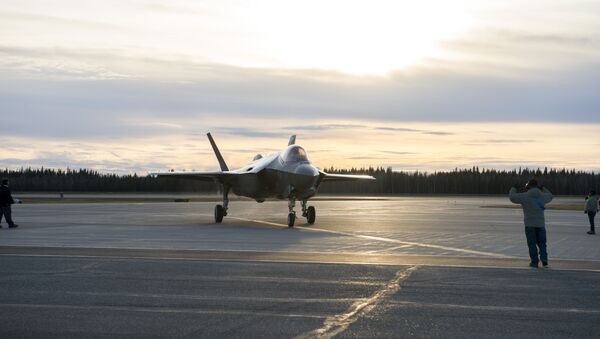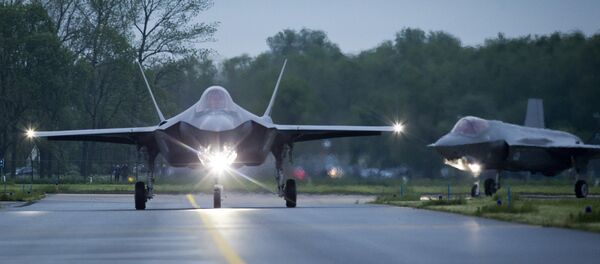The F-35 simulated flight conditions ranging from —40 to 120 degrees Fahrenheit at Eglin Air Force Base in Valparaiso, Florida, where the fifth-generation fighter's "oil did not flow as well" in tests simulating cold temperatures, F-35 Joint Program Office spokesman Joe DellaVedova told Defense Tech January 30, 2015.
A single F-35A, the US Air Force variant, arrived at Eielson Air Force Base near Fairbanks, Alaska, last Thursday, to demonstrate the plane's ability to land on a runway surface similar to ice. The Air Force assigns landing strips Runway Condition Readings (RCR) ranging from 5 to 23, where an RCR of 23 designates a dry runway and a 5 indicates conditions roughly equivalent to landing on ice, an air force statement says. So far the F-35 has been certified to land on runways with a reading of 12, but Thursday's test evaluated conditions of an RCR of 7.
Support teams "try to keep our runway at an RCR of 12 or better during harsh winters, but often are below that," says USAF Capt. Daniel Campbell. "We need the lower RCR certifications to ensure the F-35A can operate throughout our winters," the captain said.
The second main outcome the service hopes to achieve is certifying the plane's "Norwegian drag chute" braking system, the US Air Force's 354th Wing Public Affairs Office said October 13.
The tests seem to be a first step toward verifying F-35 aircraft can live up to Eielson Air Force Base's motto: "ready to go at 50 below."
According to former US Marine Corps officer Carlton Meyer's G2mil Quarterly, "drag chutes can help stop aircraft in nearly all landing emergencies before they run off the end of a runway or into other aircraft."
The military plans to station two squadrons of F-35As at Eielson AFB by 2020.



